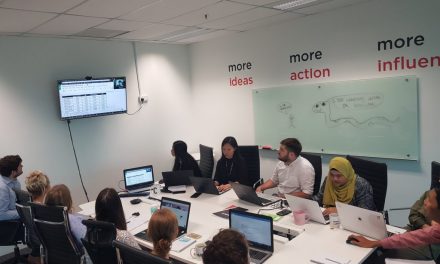KUALA LUMPUR: Malaysian workers receive lower compensations relative to their contribution to national income from productivity and equity perspectives, especially when benchmarked against the world’s advanced economies.
Bank Negara Malaysia, in its 2018 Annual Report, said the advanced economies that it had benchmarked against were the US, United Kingdom, Australia, Germany and Singapore.
They were chosen based on their state of economic development and availability of data.
“While Malaysia’s productivity level is comparable to other middle-income countries, it is still well below that of advanced economies which is due to the slower pace of technological advancements and human capital development.
“Analysis of the wage to productivity ratio shows that Malaysian workers are still being paid less than workers in benchmark economies, even after accounting for the different productivity levels across countries. This suggests that Malaysia’s current wage productivity levels are misaligned,” the central bank said.
Citing an example, Bank Negara said if a Malaysian worker produces output worth US$1,000, he would be paid US$340. The corresponding wage received by a worker in benchmark economies for producing the same output worth US$1,000 was higher at US$510.
“Further analysis reveals that most industries in Malaysia compensate workers less than those in the benchmark economies, even after adjusting for productivity.”
This was particularly evident in the wholesale and retail trade, food and beverage and accommodation industries that make up 19 per cent of economic activity and 27 per cent of total employment in Malaysia.
“These industries are generally more labour-intensive, and dependent on low-skilled workers,” it said.
The workforce in these industries typically lacks bargaining power, particularly due to the abundance of low-skilled workers, including foreign workers. As a result, the mean wage in these industries, at RM1,727 in 2016, was nearly 30 per cent below the national average of RM2,463.
Bank Negara said the gap between real wage growth from a firm’s and worker’s perspective had significantly widened since 2015.
Wages increased faster from an employer’s perspective than a worker’s perspective as the market price of goods and services sold by firms increased at a slower pace than the price of goods and services consumed by employees.
Bank Negara noted that firms often cited rising wages as a squeeze to business margins, while workers complaint about “stagnant wages” and rising cost of living, which broadly captures the sharply differing sentiments on sluggish wage growth between employers and employees.
It suggested several key initiatives to strengthen the role of Productivity-Linked Wage System (PLWS). This included strengthening the country’s legislative and enforcement capabilities, actively publicising successful case studies and promoting PLWS among government-linked corporations (GLCs), including their suppliers and vendors.
“Components of PLWS could also include mandatory disclosure of factors underpinning employees’ compensation and increment, allowing for more open and direct discourse on compensation packages,” Bank Negara said.









